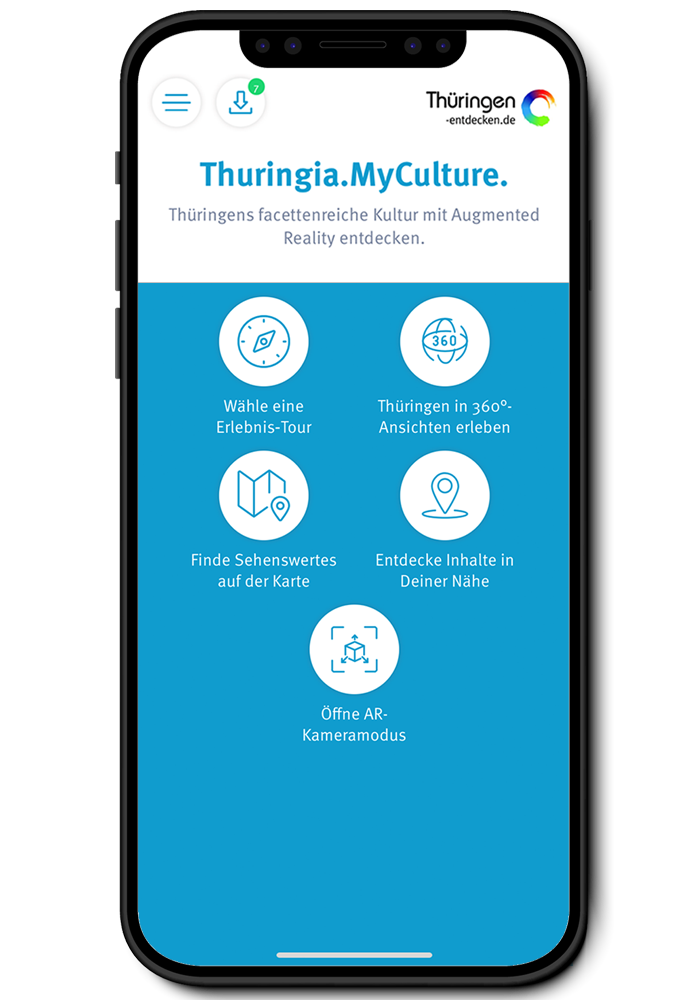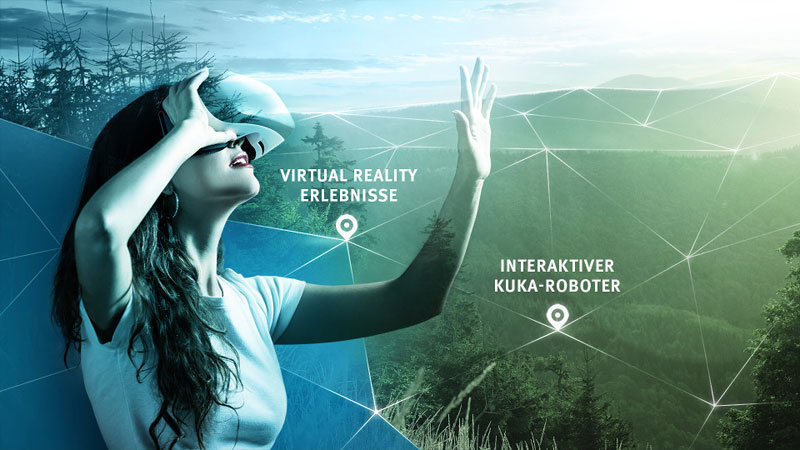Visit the state capital Erfurt and go on a virtual discovery tour through Thuringia.
Exquisite treasures
Herzogin Anna Amalia Bibliothek library
"In libraries one feels to be in the presence of enormous capital which silently yields inestimable amounts of interest." Great words by the great Goethe, and they apply particularly to the Herzogin Anna Amalia Bibliothek library. Staying with this metaphor: visitors can expect a particularly high yield there. After all, the collection, appreciated by researchers and visitors alike, is actually a public library as well as a museum worth seeing, besides the fact that it is naturally an important archive and research library. It is also a place that unites the past, the present and the future. "Some people have a very close relationship with books," says director Reinhard Laube when explaining "his" clientele, "to others, however, our museum offers a digital added value."
Like in many such places, the crucial question Laube must address is the role of books in the 21st century. However, instead of print or digital, the motto here is and! Quite besides the super-sized archive of digitised and publicly accessible works, mobile phone owners can peruse these precious written words via QR codes. In addition, there are many modern elements in between the paintings of historic figures, such as the on-screen quiz on the first floor, for example. Nine questions, with three suggested answers for each. So, click and go! The smallest book in the library? Solution: It's around the same size as a single sesame seed! The largest book in the library? Measures 1.12 metres! How many books are stored here in total? Correct: 1.1 million! Although the key area – European literary and cultural history with a particular focus on the era between 1750 and 1850, including the world's most extensive Faust collection – covers even more: sheet music, maps, globes and a record repository of family registers spanning an era from 1550 to 1950, including entries by Galileo Galilei, Johannes Kepler and Louis Spohr. "They're like a kind of very, very early Facebook," says Laube, establishing a connection with the present.
Excited anticipation
Unusual: the subject of books is explored with all senses. You might hear the sound of someone turning the pages of a book from a speaker, for example; next door, a tactile model makes it possible to examine the campus with your hands. Obvious focus: the main building in 3D, including its various extensions, which were added to the little green Renaissance "castle" after its rococo makeover between 1760 and 1766 to house the library, like the Coudray annex in which you are currently standing.
Not far to go, the Rococo Hall is waiting for us! The fact that there's a museum guard already hints at the preciousness of what is hidden behind the high doors. He points to some felt slippers in a friendly way and asks you to kindly put them over your shoes. "To wipe the floor," says the man jokingly. Do we also have to wear those white gloves? Not necessary, because although you can order some books to take a closer look, you are not permitted to touch anything in the room itself. After all, Laube did not promise a reading library, but a "hall celebrating books".
Reverential atmosphere in the holiest of holy
Temple might also have been an apt description, because as soon as you enter the hall, built in 1766, you simply feel awed. Reverential. Speechless, and this in the middle of the many words that are written here in thousands of books. They are perfectly staged in the oval hall that stretches across two galleries, thanks to numerous windows, curved shelves – some edged with shiny, gold-coloured hammered metal – and a ceiling fresco. A prime example of the rococo style! Busts of some of the great minds and important figures of the time, including Herder, Wieland, Goethe and Schiller, add a classic touch. Years ago, the latter's skull, which was supposedly stored here, provided the stuff for a local farce which, hardly surprisingly, ended with the conclusion that this really wasn't Schiller's dome after all. Genuine, on the other hand, is the picture of Duke Carl August, who was responsible for making this one of the first ducal libraries accessible to the German public. His mother, the Duchess Anna Amalia, was even more committed to this idea. It is absolutely justified that the library was named after her in 1991.
Goethe, who was its director for 35 years, would also have deserved this honour. During this time, he doubled the size of the repository to 80,000 works, had an extension built and upgraded the Book Tower. Inside this round building with several floors, there are works on warfare, but also works on herbs, gardens, statues (like the "Stampe delle opere" by the sculptor Canova, which measures 1,12 metres and dates back to 1817) and, well, yes, erotic literature. The curious do their best to spot the abbreviation ER on shelf number 6.
The tower is only accessible within the scope of small guided tours. The doors to the Vulpius Gallery on the third floor, where visitors can ask to see books close up and/or view the Rococo Hall from a lofty perspective, are also only open to them if they have booked this in advance. From there, they will also be able to clearly see the blackened balustrade, a reminder of Germany's worst post-war library fire. On 2 September 2004, a fire probably caused by smouldering destroyed more than 50,000 volumes, works of art and parts of the building. It is a miracle that it has been possible to restore thousands of these "part-incinerated" books (1.5 million pages, in total) – and their restoration is still ongoing.
The free app "Weimar+" offered by Klassik Stiftung Weimar is a real bonus. Visitors can listen to the entertaining episodes in each of the library's rooms (and also inside other attractions); also later on, if that's what they prefer. People who don't want to listen to them can read the transcriptions.
Header Picture: ©Jens Hauspurg, Thüringer Tourismus GmbH
Accessibility
Did you like this story?
You might also be interested in ...















